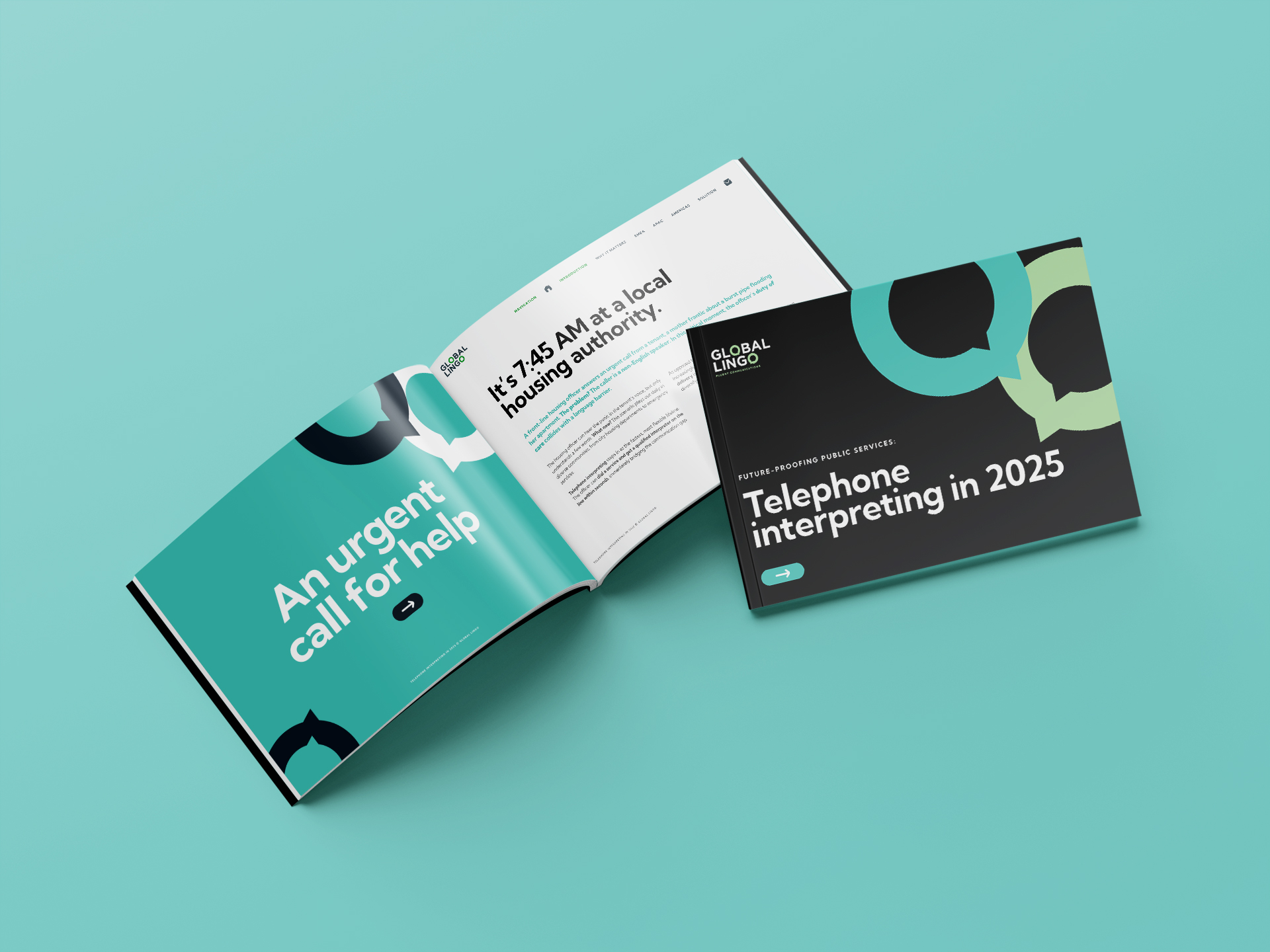It’s a scene that plays out across councils, hospitals, and housing departments daily: a local authority worker answers a call from someone in distress. There’s been an emergency. Perhaps it’s a burst pipe or maybe it’s something worse. The caller speaks little to no English, and in that critical moment, frontline support workers come face to face with a language barrier that could delay urgent help.
Our latest whitepaper shows us why telephone interpreting in the public sector remains mission critical across the globe. It is ideal for civil servants who want an in-depth understanding of how telephone interpreting services can support them.
Titled: ‘Telephone Interpreting in 2025: Global Challenges, Local Solutions’. We explore how public institutions across EMEA, APAC, and the Americas are navigating the fast-evolving language access landscape. From refugee response to healthcare access, the paper outlines the complex pressures facing local governments and how telephone interpreting meets those demands with speed, security, and scale.
Global scope with local consequences
Across all regions, multilingualism is a national challenge. In Europe, increasing refugee and asylum seeker populations have stretched the capacity of traditional interpreting models. In Asia-Pacific, vast language diversity in countries like India and Indonesia collides with tech-first governance and smart city initiatives. Lastly, in North America, compliance with laws like and the Official Languages Act (Canada) is driving renewed investment in equitable public service communication. These investments are particularly for Indigenous, migrant, and non-digital-native populations.
The trends shaping telephone interpreting in 2025
Despite the rise of AI and video translation tools, telephone interpreting continues to dominate where speed, accessibility, and confidentiality are key. Our paper outlines several reasons for this ongoing relevance:
- Instant access, 24/7 – vital for emergency services and after-hours support
- Safe and anonymous – ideal for sensitive calls (e.g. health, housing, welfare)
- More cost-effective than building in-house language teams
- Secure and compliant, with platforms engineered to meet GDPR, HIPAA, and regional data laws
- Scalable tech – from CRM integrations to API-enabled e-government portals
Download our White Paper
Download “Future-Proofing Public Services: Telephone Interpreting in 2025” to explore the policies, technologies, and human insights shaping multilingual public service delivery worldwide. And see how on-demand telephone interpreting services can be used to resolve local and national challenges.
